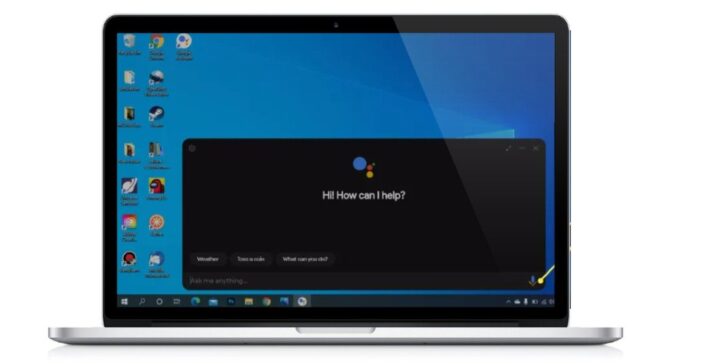
How to get Google Assistant on Windows 10, macOS laptop
Google Assistant is not a new service, but its reputation is steadily growing. Although it has been facing privacy controversies so far, it is undoubtedly one of the most advanced services in terms of the accuracy of search results and the convenience of initiating voice interaction. If you are also fascinated by the convenience of the Google Assistant service on your Android phone, you will be pleased to notice that there are some simple and simplified ways to make the Google Assistant run on your Windows 10 and macOS PC. Here’s how to make Google AI voice assistant a work assistant on laptops and desktops.
Google Assistant on Windows 10 PCs (laptops and desktops) is a bit tricky to install. The process itself is not complicated; it is slightly more complicated. Therefore, please make sure you read each note carefully-especially if you are not a tech-savvy user. Please also note that Google Assistant is not available as an official service on Windows 10, so you will rely on unofficial file downloads-so please do so at your own risk.
· You first go to the homepage of the Google Operations Console. If not already logged in to Google, please login in the first step.
· After logging in, you will see a “New Project” button. Click it to start. Accept the prompted terms to continue.
· Name your project here. You can set any name at will.
· After the project page opens, scroll or find an option that says, “Are you looking for device registration?” Click the “Click here” button to continue.
· Here, the system will ask you to “register model” to register your device. Enter whatever you like in the product and manufacturer name fields, then select any product category and continue.
· In the next step called “Download Credentials,” click “Download OAuth 2.0 Credentials”. This will download the JSON file to your PC. Keep it at hand.
· Next step, go to the Google Cloud Platform console and click “Select Project” from the upper left corner of the page.
· Here, select “All” to find your project and open it. After opening, find the “API and Services” option in the slide-out left menu. Click it.
· Here, click “Enable API and Services” in the top row, find and select Google Assistant API, and then enable it.
· After enabling, a new page will open. Here, go to the “Credentials” tab on the left and select “Configure Consent Screen” from the page that opens. On the next page, select the user type “External” and click Create.
· On the same screen, then select your email address, scroll to the bottom, add your email ID to the developer contact, and click “Save and Continue.”
· When finished, click “Return to Dashboard.” Here, scroll down to find the “Test User” field and click “Add User.” Select your email ID again and save.
· Open a new browser tab and download the unofficial Google Assistant desktop client from Github. Run it and follow the suggested instructions to install it.
· Press Windows+Shift+A, and the assistant should appear. Click Start, click Continue, and then click the Settings button in the upper left corner.
· Under the “Authentication” field, manually select the “Key file path.” Here, select the JSON file downloaded in step 6. Select Save, select “Automatic,” and then select Restart Assistant.
· A new browser window will automatically open. After logging in to Google, select “Allow” from the screen prompt. You will be asked again to confirm your choice and select “Allow” again.
· Finally, you will get a link. Copy and paste it into the restarted Google Assistant; it is waiting for you to enter the key.
· Add the key, restart it, and you will now have a fully functional version of Google Assistant running on a Windows 10 PC.
In contrast, the process of installing Assistant on macOS is quite simple, thanks to MacAssistant on GitHub. The process is as follows:
· Go to the MacAssistant page on GitHub and download the ZIP file available at the top.
· After downloading, double-click to unarchive the file, and then drag and drop it to the “Applications” tab to install
· To open it, hold down the Control key and click the icon in the “Applications” tab, click “Open,” and confirm the opening when prompted again.
· Google Assistant will now run on the taskbar at the top. For the first time, you need to log in to your Google account.
